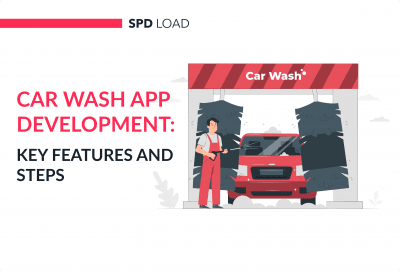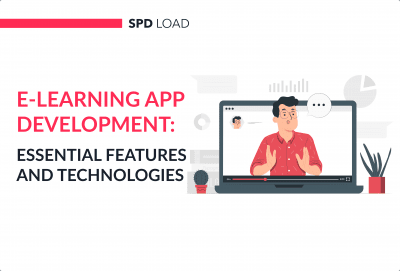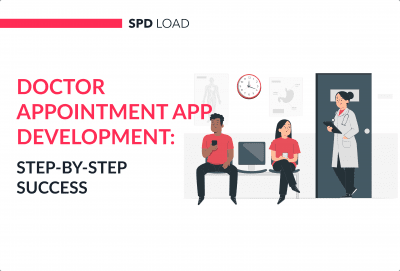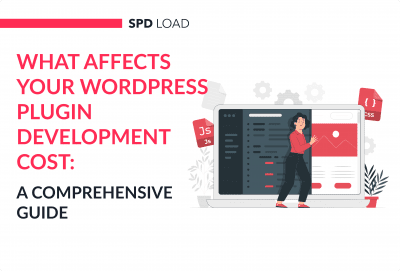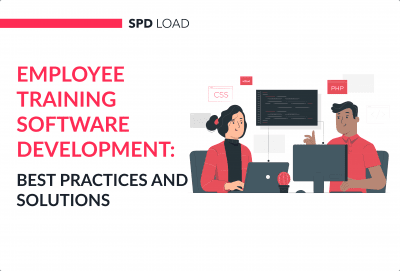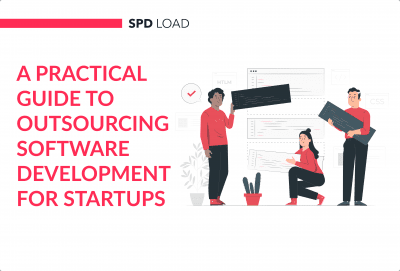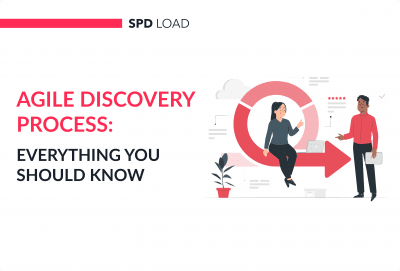Software Development Glossary: 110 Terms You Should Know
- Created: Feb 27, 2024
- 13 min
Software development can seem overwhelming for those new to the tech industry. However, don’t worry, as we’re here to help!
Our glossary is designed to help newbies in the tech industry understand essential software development terms. With our help, you can navigate through the development process with ease.
This glossary will define essential software development terms to give your company complete insight into managing, building, and owning a software product.
Transform your ideas into reality with custom software tailored just for your business – contact us today!
A
- Alpha testing: Software testing performed by internal staff or developers before making it available to external testers, focusing on identifying bugs and issues early in the development cycle.
- Algorithm: A set of rules or a step-by-step procedure for solving a problem or performing a task, particularly in computing.
- API (Application Programming Interface): A set of rules and definitions that allows different software applications to communicate with each other.
- Application: A software program designed to perform a specific set of functions or tasks for the end-user.
- Architecture: The high-level structure of a software system, the discipline of creating such structures, and the documentation of these structures.
B
- Backend: The part of a software application not visible to the user, responsible for managing data and performing core functions. It often refers to the server, the database, and the server-side applications.
- Beta testing: The second phase of software testing in which a sample of the intended audience tries the product in a real-world environment to identify bugs or issues before the final release.
- Bug: An error, flaw, or fault in a software program that causes it to produce an incorrect or unexpected result or to behave in unintended ways.
- Branch: In version control systems, a branch is a parallel version of a repository. It is contained within the repository but does not affect the primary or master branch, allowing you to work freely without disrupting the “live” version.
- Build: In software development, a build is a process by which source code is compiled, along with all its dependencies, to run on a computer or to be deployed to an environment.
C
- CI/CD Pipeline: An automated process in software development that enables continuous integration (CI) of code changes and continuous delivery (CD) of those changes to a production environment.
- Cloud Computing: The delivery of computing services—including servers, storage, databases, networking, software, analytics, and intelligence—over the Internet to offer faster innovation, flexible resources, and economies of scale.
- Code Refactoring: The process of restructuring existing computer code to improve its readability and reduce complexity without changing the external behavior.
- Compiler: A special program that processes statements written in a particular programming language and turns them into machine language or “code” that a computer’s processor uses.
- Continuous Integration (CI): A software development practice where dedicated development team members integrate their work frequently. Usually, each person integrates at least daily, leading to multiple daily integrations.
- Continuous Deployment (CD): A software release process that uses automated testing to validate if changes to a codebase are correct and stable for immediate autonomous deployment to a production environment.
- Containerization: A lightweight alternative to full machine virtualization that involves encapsulating an application in a container with its own operating environment.
- CSS (Cascading Style Sheets): A style sheet language used for describing the presentation of a document written in HTML or XML, controlling layout, colors, and fonts.
D
- Database: An organized data collection, generally stored and accessed electronically from a computer system. Databases allow data to be easily accessed, managed, modified, updated, controlled, and organized.
- Debugging: The process of finding and resolving defects or problems within a software program that prevent correct operation.
- Deployment: The process by which software is made available for use, either by installing it on a server or by distributing it to users.
- Design Pattern: A general repeatable solution to a commonly occurring problem in software design.
- DevOps: A set of practices that combines software development (Dev) and IT operations (Ops), aiming to shorten the systems development life cycle and provide continuous delivery with high software quality.
- DevSecOps: Integrating security practices within the DevOps process. DevSecOps involves creating a ‘Security as Code’ culture with ongoing, flexible collaboration between release engineers and security teams. If you want to learn more about DevOps specialists, check out our DevOps glossary that covers key terms to help you stay on top of DevOps practices and tools.
E
- Encapsulation: An object-oriented programming concept that binds together the data and functions that manipulate the data and that keeps both safe from outside interference and misuse.
- End User: The final product consumer who uses it for its intended purpose or application.
- Environment: In software development, an environment is a setup where software and applications are developed, tested, and deployed. Common environments include development, testing, staging, and production.
F
- Framework: An abstraction in which software providing generic functionality can be selectively changed by additional user-written code, thus providing application-specific software. It provides a foundation for software developers to build programs for a specific platform.
- Frontend: The part of a software application or website that users interact with directly. The frontend is built using technologies like HTML, CSS, and JavaScript to create the user interface and user experience.
- Functional Programming: A programming paradigm where programs are constructed by applying and composing functions. It is a declarative programming paradigm, which means programming is done with expressions or declarations instead of statements.
- Full Stack Developer: A software engineer who is competent to handle both the frontend and backend development of an application, understanding how every part of the web development process takes place and how it affects the end result.
G
- Git: A distributed version control system that is widely used in software development for tracking changes in source code during software development.
- GUI (Graphical User Interface): A type of user interface that allows users to interact with electronic devices using graphical icons and visual indicators, as opposed to text-based interfaces, typed command lines, or text navigation.
H
- Hardware: The physical components of a computer system, such as the processor, memory devices, and input/output devices.
- HTML (Hypertext Markup Language): The standard markup language for documents designed to be displayed in a web browser. It can be assisted by technologies such as Cascading Style Sheets (CSS) and scripting languages such as JavaScript.
- Hashing: A function that converts an input (or ‘message’) into a fixed-size string of bytes. The output, typically a ‘digest,’ is designed to be unique for different inputs. Hashing is commonly used in creating hash tables, cryptography, and checksums.
- High-Level Language: A programming language with strong abstraction from the details of the computer. Compared to low-level programming languages, it may use natural language elements, be easier to use, or be more portable across computing platforms.
I
- IDE (Integrated Development Environment): A software application that provides comprehensive facilities to computer programmers for software development, typically consisting of a source code editor, build automation tools and a debugger.
- Interface: In object-oriented programming, an interface is a definition of methods that a class must implement. Interfaces enable a polymorphism known as interface inheritance and can define a set of functions or commands to which different objects can respond.
- Integration Testing: A level of software testing where individual units are combined and tested as a group. The purpose of this level of testing is to expose faults in the interaction between integrated units.
J
- JavaScript: A high-level, interpreted scripting language that enables dynamic interactivity on websites when applied to an HTML document. It’s widely used in web development to create responsive, interactive elements.
- Jenkins: An open-source automation server written in Java used to automate parts of software development related to building, testing, and deploying, facilitating continuous integration and continuous delivery.
Unleash AWS's Full Potential with Our Developers.
K
- Kanban: An agile methodology designed to enhance efficiency featuring visualization of the entire project through large boards and cards representing tasks. It helps teams manage the flow of tasks as they move through stages of completion.
- Kubernetes: An open-source platform for automating containerized applications’ deployment, scaling, and operations, allowing for managing application containers across clusters of hosts.
- KISS Principle (Keep It Simple, Stupid): A design principle that states most systems work best if they are kept simple rather than made complex; therefore, simplicity should be a key goal in design, and unnecessary complexity should be avoided.
L
- Library: In software development, a library is a collection of non-volatile resources used by computer programs, often to develop software. These may include configuration data, documentation, help data, message templates, pre-written code and subroutines, classes, values, or type specifications.
- Loop: A fundamental programming concept that refers to the repetition of a sequence of code until a certain condition is met, an essential mechanism that allows the execution of complex repetitive tasks efficiently.
- Lambda Functions: Also known as anonymous functions or function literals, lambda functions are defined functions and possibly called without being bound to an identifier. They are widely used in functional programming paradigms.
M
- Machine Learning: A subset of artificial intelligence that involves training algorithms to recognize patterns and make decisions with minimal human intervention.
- Maintenance: The process of regularly checking and repairing a system or equipment to ensure it continues to operate correctly.
- Methodology: In software development, a methodology is a structured approach to building software, encompassing the processes, techniques, and tools used throughout the software development lifecycle. Examples include Agile, Scrum, and Waterfall.
- Middleware: Software that lies between an operating system and its applications, providing services to software applications beyond those available from the operating system.
- Microfrontend: An architectural style where independently deliverable frontend applications are composed into a greater whole. It extends the concepts of microservices to the frontend development realm.
- Microservices: An architectural style that structures an application as a collection of small, autonomous services modeled around a business domain, improving modularity and making the application easier to understand, develop, and test.
- MVC (Model-View-Controller): A software architectural pattern that separates an application into three main logical components: the model, the view, and the controller, each with distinct responsibilities.
- MVP (Minimum Viable Product): A development technique in which a new product is developed with sufficient features to satisfy early adopters, with the final set of features only designed and developed after considering feedback from the product’s initial users.
- Merge Conflict: A situation that occurs when different changes made by multiple developers to the same line of code or segment of a file in a version-controlled project are attempted to be merged together.
N
- Node.js: An open-source, cross-platform JavaScript runtime environment that executes JavaScript code outside a browser. Node.js lets developers use JavaScript to write command-line tools and for server-side scripting to produce dynamic web page content before the page is sent to the user’s web browser.
- NoSQL: A category of database management systems that does not require a fixed schema and is easy to scale. NoSQL databases are used for large sets of distributed data and are known for their flexibility, performance, scalability, and ease of use.
O
- Object-oriented Programming (OOP): A programming paradigm based on the concept of “objects,” which are data structures that contain data in the form of fields (often known as attributes or properties) and code in the form of procedures (often known as methods).
- Open Source: A term denoting software for which the source code is made freely available and may be redistributed and modified. Open-source software development promotes collaboration and transparency.
- ORM (Object-Relational Mapping): A programming technique for converting data between incompatible type systems in object-oriented programming languages. It creates a “virtual object database” that can be used within the programming language.
- Optimization: The process of modifying a system to make some aspects of it work more efficiently or use fewer resources. In software development, this can involve improving the performance of the code or reducing its complexity to enhance maintainability.
P
- Package Manager: A tool that automates installing, upgrading, configuring, and removing software packages from a computer. Popular package managers include npm for JavaScript, pip for Python, and Maven for Java.
- Performance Testing: The process of determining the speed, responsiveness, and stability of a computer, network, software program, or device under a workload.
- Plugin: A software component that adds a specific feature to an existing computer program, allowing customization or additional functionality.
- Polymorphism: In programming, polymorphism is the ability of a variable, function, or object to take on multiple forms. It is a core concept in OOP, allowing objects of different classes to be treated as objects of a common superclass.
- Prototype: An early sample, model, or release of a product built to test a concept or process or to act as a thing to be replicated or learned from.
- Pull Request: In distributed version control systems, a pull request is a method of submitting contributions to a project. It lets you tell others about changes you’ve pushed to a repository so that the project maintainer can review and merge them.
Q
- Quality Assurance (QA): The systematic process of verifying whether a product or service meets specified requirements. In software development, QA involves various forms of testing to ensure the software is free of defects and meets the quality standards set by stakeholders.
R
- Refactoring: The process of restructuring existing computer code without changing its external behavior, aimed at improving nonfunctional attributes of the software.
- Repository: In version control systems, a repository is a central file storage location where code is stored and managed. It’s a key concept in collaborative software development environments like Git.
- REST (Representational State Transfer): An architectural style for designing networked applications, often used in the development of web services to enhance scalability, performance, and simplicity by using a stateless protocol (HTTP).
- Runtime: The period during which a program is running, beginning when the program is executed and ending when the program is terminated. Runtime can also refer to the environment in which a program runs.
- Recursion: A method of solving problems where the solution to a problem depends on solutions to smaller instances of the same problem. In programming, a recursive function calls itself.
S
- SaaS (Software as a Service): A software distribution model in which applications are hosted by a vendor or service provider and made available to customers over the internet.If you’re deciding between software models, this comparison of the ASP model vs SaaS model can help you choose.
- SQL (Structured Query Language): A domain-specific language used in programming for managing and manipulating relational databases.
- Scrum: An agile framework for managing knowledge work, emphasizing software development, characterized by a fixed-length iteration called a Sprint and daily meetings known as Daily Scrums.
- Serverless Computing: A cloud-computing execution model where the cloud provider dynamically manages the allocation and provisioning of servers. A serverless approach can reduce the system administration burden for developers. Cloud-based app development enables businesses to provide reliable, fast service to their customers.
- Software: A set of instructions, data, or programs used to operate computers and execute specific tasks.
- Software Lifecycle: The phases a software product goes from conception to end of life, including planning, development, testing, deployment, maintenance, and eventual retirement.
- Source Code: The human-readable instructions that a programmer writes—often in a high-level programming language—before it is compiled or interpreted into machine language.
- Sprint: In the Scrum agile methodology, a sprint is a set period during which specific work must be completed and ready for review.
Optimize Your Development Lifecycle with DevOps Experts.
T
- Test-Driven Development (TDD): A software development process that relies on repeating a concise development cycle: requirements are turned into particular test cases, then the software is improved to pass the new tests.
- TypeScript: A strict syntactical superset of JavaScript developed by Microsoft, adding optional static typing to the language, aimed at making the development of large-scale applications more manageable.
- Technical Debt: The implied cost of additional rework caused by choosing an easy solution now instead of using a better approach that would take longer. It’s a metaphor reflecting the tradeoff between short-term and long-term goals in software development.
- Tokenization: The process of converting data into a token that represents but does not equal the original data. It’s often used in software development for data security, allowing sensitive information to be replaced with non-sensitive equivalents.
U
- UI (User Interface): The space where interactions between humans and machines occur, aiming for effective operation and control of the machine from the human end and feedback from the machine to the user.
- UML (Unified Modeling Language): A standardized general-purpose modeling language in the field of software engineering intended to provide a standard way to visualize the design of a system.
- Unit Testing: A software testing method by which individual units of source code—sets of one or more computer program modules together with associated control data, usage procedures, and operating procedures—are tested to determine whether they are fit for use.
- User Story: An informal, natural language description of one or more features of a software system, often used in Agile software development methodologies to capture requirements from an end-user perspective.
- UX (User Experience): The overall experience of a person using a product such as a website or computer application, especially in terms of how easy or pleasing it is to use.
V
- Version Control System (VCS): A system that records changes to a file or set of files over time so that specific versions can be later recalled. Popular VCSs include Git, Subversion (SVN), and Mercurial.
- Virtual Machine (VM): An emulation of a computer system that provides the functionality of a physical computer. VMs are often used in software development for testing and running software on different operating systems without the need for multiple physical machines.
- Validation: The process of ensuring that a program operates on clean, correct, and useful data. It involves checks and routines for data integrity, correctness, and completeness in software applications.
- Variable: A storage location paired with an associated symbolic name, which contains some known or unknown quantity of information referred to as a value. Variables are fundamental in programming for storing and manipulating data.
- Vue.js: An open-source Model–View–ViewModel frontend JavaScript framework for building user interfaces and single-page applications, known for its incrementally adoptable ecosystem.
W
- Webhook: A method of augmenting or altering the behavior of a web page or web application with custom callbacks. Webhooks are user-defined HTTP callbacks, typically triggered by specific events, such as pushing code to a repository or when a new user signs up.
- Wrapper: In software engineering, a wrapper is a software that functions as an interface to another software or component, allowing incompatible components to communicate or adding additional functionality to existing components without modifying their source code.
- Web Services: Software services that are made available over the Internet and executed on a remote system hosting the requested services. Web services commonly use XML and HTTP to communicate, allowing applications to interact with each other over the web. Selecting the right hosting solution is key to your SaaS success. Learn about the best options in our guide to hosting for SaaS.
- Web Application Framework: A software framework designed to support the development of web applications, web services, and web resources. Frameworks provide libraries for database access, templating frameworks, and session management, and they often promote code reuse.
- Waterfall Model: A sequential (non-iterative) design process used in software development, where progress flows steadily downwards (like a waterfall) through several phases, such as conception, initiation, analysis, design, construction, testing, deployment, and maintenance.




